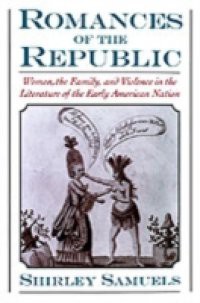Romances of the Republic contributes to the lively field of scholarship on the interconnection of ideology and history in early American literature. Shirley Samuels illustrates the relations of sexual, political, and familial rhetoric in American writing from 1790 to the 1850s. With special focus on depictions of the American Revolution and on the use of the family as a model and instrument of political forces, she examines how the historical novel formalizes the more extravagant features of the gothic novel--incest, murder, the horror of family--while incorporating a sentimental vision of the family. Samuels's analysis deals with writers like Charles Brockden Brown, Catherine Sedgwick, James Fenimore Cooper, and Mason Weems, and argues that their novels formulated a family structure that, unlike earlier models, was neither patriarchal nor a revolt against patriarchy. In emphasizing sibling rivalry and inter-generational quarrels about marriage, the novel of this period attempted to unite disparate political, national, class, and even racial positions.



 1 (1)
1 (1) 















